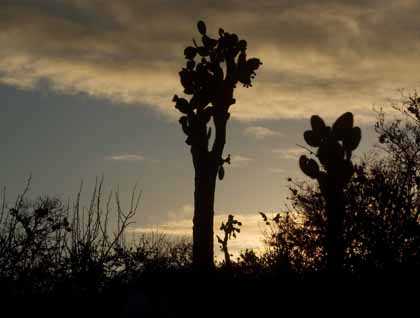South Plaza became one of the first visitor sites many years ago. Unlike most of the other islands in the Galapagos, it doesn’t have a great diversity of land-based animals and plants competing for territory and resources, perhaps because of its relatively small size. Many plants species arrived but did not successfully establish themselves. Santa Fe gets the same amount of rainfall as the other islands but the rain evaporates almost instantly.
Land iguanas are the one and only land reptiles that dominate the landscape. They survive thanks to the presence of cactus and other plants that manage to effectively store water in the rainy season. During this time, the land iguanas manage to store fat in their tails as energy reserves to be used in the dry season. Because they eat portulaca blossoms and cactus flowers, the skin of the iguanas can appear yellow under their transparent scales. Some iguanas can accumulate significant amounts of color.
Around eight o’clock in the morning, our guests disembarked in order to hike along the narrow trails of South Plaza. As we slowly explored the first section, many swallow-tailed gulls and land iguanas became the primary subject of our introduction to the island’s wildlife. Galapagos shearwaters flew along the cliffs as they tried to land in very windy conditions.
After a navigation of 18 nautical miles, the National Geographic Islander arrived at Santa Fe Island.
Our expedition leader Sofia had a good plan for the excursion. A small group of guests on kayaks explored the bay in search of sea turtles, white-spotted eagle rays and sea lions, while another group of guests experienced the great marine diversity by snorkeling.
Later in the afternoon, we landed on Santa Fe to more closely observe the land iguanas found only in this place. Lucky for us, we were able to see several land iguanas in addition to Darwin finches, Galapagos doves, mockingbirds and other wildlife. We had an incredible visit.







